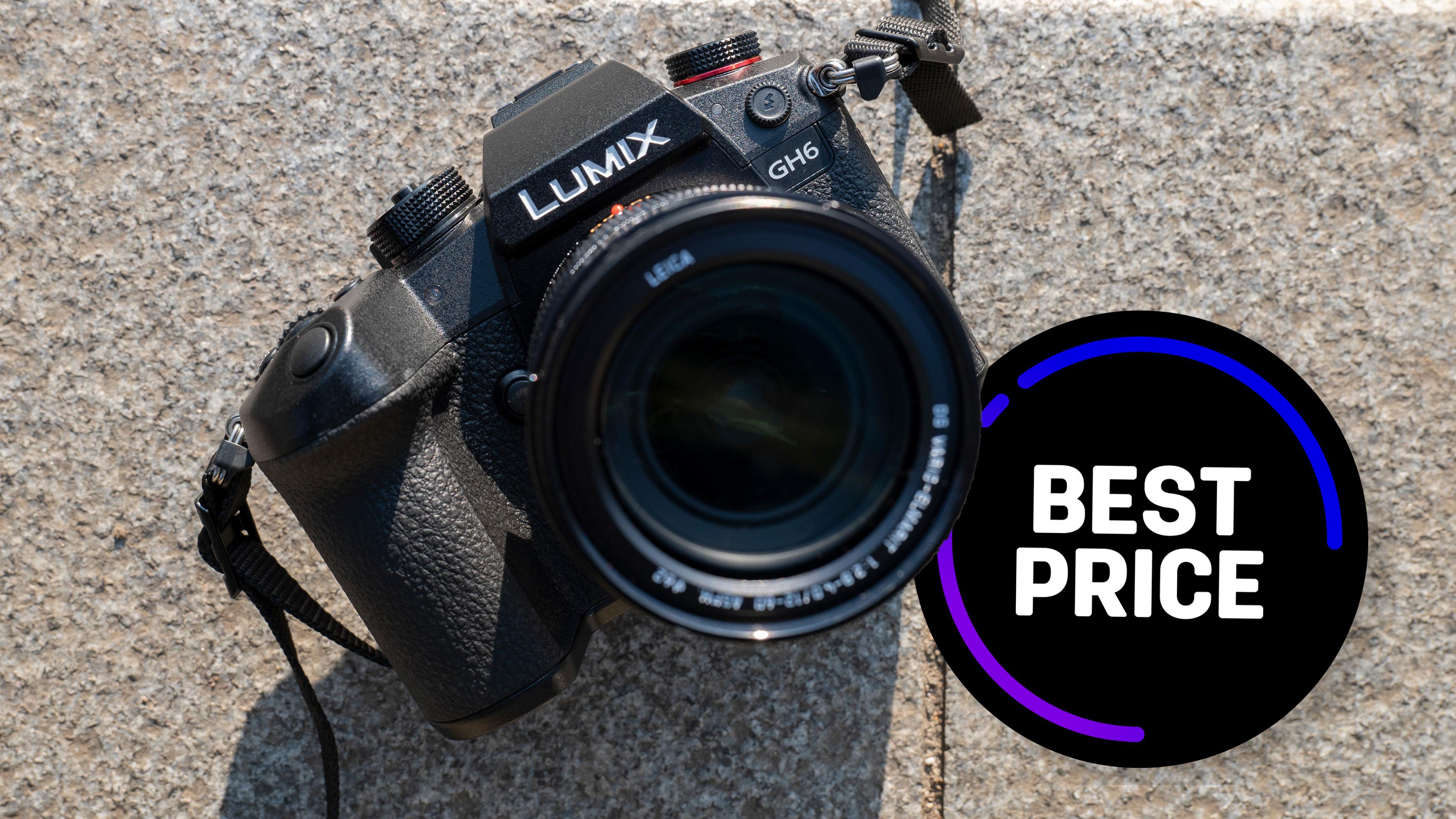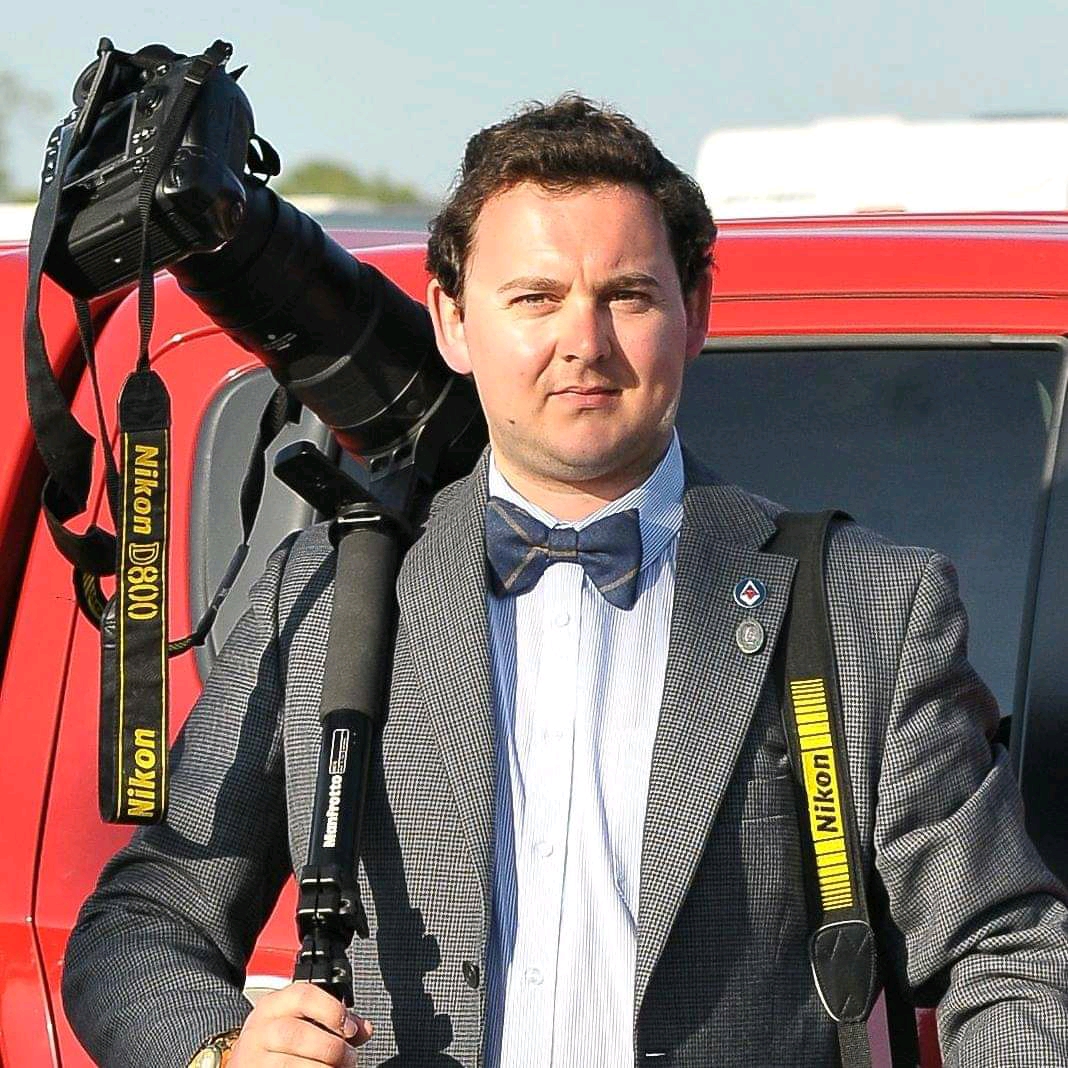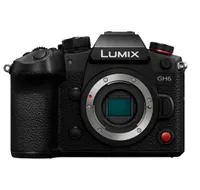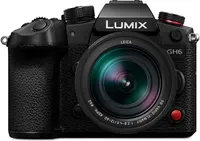Panasonic Lumix GH6 hybrid camera drops to its lowest-ever price
At £849 for the body, or £1,299 with a zoom, this is a great price for this former hybrid Micro Four Thirds flagship

It may not be one of the most recent cameras, but this huge reduction in the price of Panasonic's Lumix GH6 make this oldtimer well worth a look if you want a video-centric mirrorless camera.
Since its release in 2022, the GH6 has been one of the most sought-after Micro Four Third cameras around for video and stills in a compact package. After missing its 2021 release in the height of the Pandemic, the Panasonic GH6 finally arrived and the manufacturer's new GH flagship packs a brand new 25.2MP sensor, 5.7K 30p internal video in ProRes 4:2:2 HQ, and unlimited video recording.
Panasonic Lumix GH6 body | now £849
Save £450 at Amazon Panasonic's Micro Four Thirds captures 25.2-megapixel images, along with cine 4K and 4K 4:2:2 video recording. If video is your main focus, but you also like taking imaging, this is the perfect budget-priced opttion for you.
Panasonic Lumix GH6 + Leica 12-60mm | now £ 1,299
Save £400 at Amazon If you want a lens, then this alternative deal sees the GH6 body paired with the Panasonic Leica DG Vario-Elmarit 12-60mm f/2.8-4 ASPH. Power O.I.S. standard zoom offers a useful equivalent focal length range of 24-120mm.
The Panasonic GH6 became the first Micro Four Thirds camera to use CFexpress Type B cards, facilitating an almost overwhelming capacity for high-end video recording – including 4:2:0 10-bit Cinema 4K 60p internal (with simultaneous 4:2:2 HDMI output), 5.8K 10-bit anamorphic using the full sensor area.
Another first for G series cameras was the inclusion of V-Log / V-Gamut, to maximize the GH6's 12 stops of dynamic range – which increases to 13 stops when employing the Dynamic Range Boost mode. This acts similarly to Panasonic's dual gain readout (which is distinct from dual native ISO), and employs a base ISO of 800 to produce a high-saturation image and ISO2000 to capture a low-noise image; these are composited, at up to 60p, for rich HDR video.
Audio gets as much love as video, with the former flagship supporting 4-channel, 24-bit, 48kHz or 96kHz recording via XLR microphone adapter. The 2-channel built-in microphone also supports 24-bit 48kHz.
If this article has been interesting why not consider looking at our picks for the best cinema camera or best cinema lenses to give your productions the extra edge against others
The best camera deals, reviews, product advice, and unmissable photography news, direct to your inbox!

For nearly two decades Sebastian's work has been published internationally. Originally specializing in Equestrianism, his visuals have been used by the leading names in the equestrian industry such as The Fédération Equestre Internationale (FEI), The Jockey Club, Horse & Hound, and many more for various advertising campaigns, books, and pre/post-event highlights.
He is a Fellow of the Royal Society of Arts, holds a Foundation Degree in Equitation Science, and holds a Master of Arts in Publishing. He is a member of Nikon NPS and has been a Nikon user since his film days using a Nikon F5. He saw the digital transition with Nikon's D series cameras and is still, to this day, the youngest member to be elected into BEWA, the British Equestrian Writers' Association.
He is familiar with and shows great interest in 35mm, medium, and large-format photography, using products by Leica, Phase One, Hasselblad, Alpa, and Sinar. Sebastian has also used many cinema cameras from Sony, RED, ARRI, and everything in between. He now spends his spare time using his trusted Leica M-E or Leica M2, shooting Street/Documentary photography as he sees it, usually in Black and White.
You must confirm your public display name before commenting
Please logout and then login again, you will then be prompted to enter your display name.


